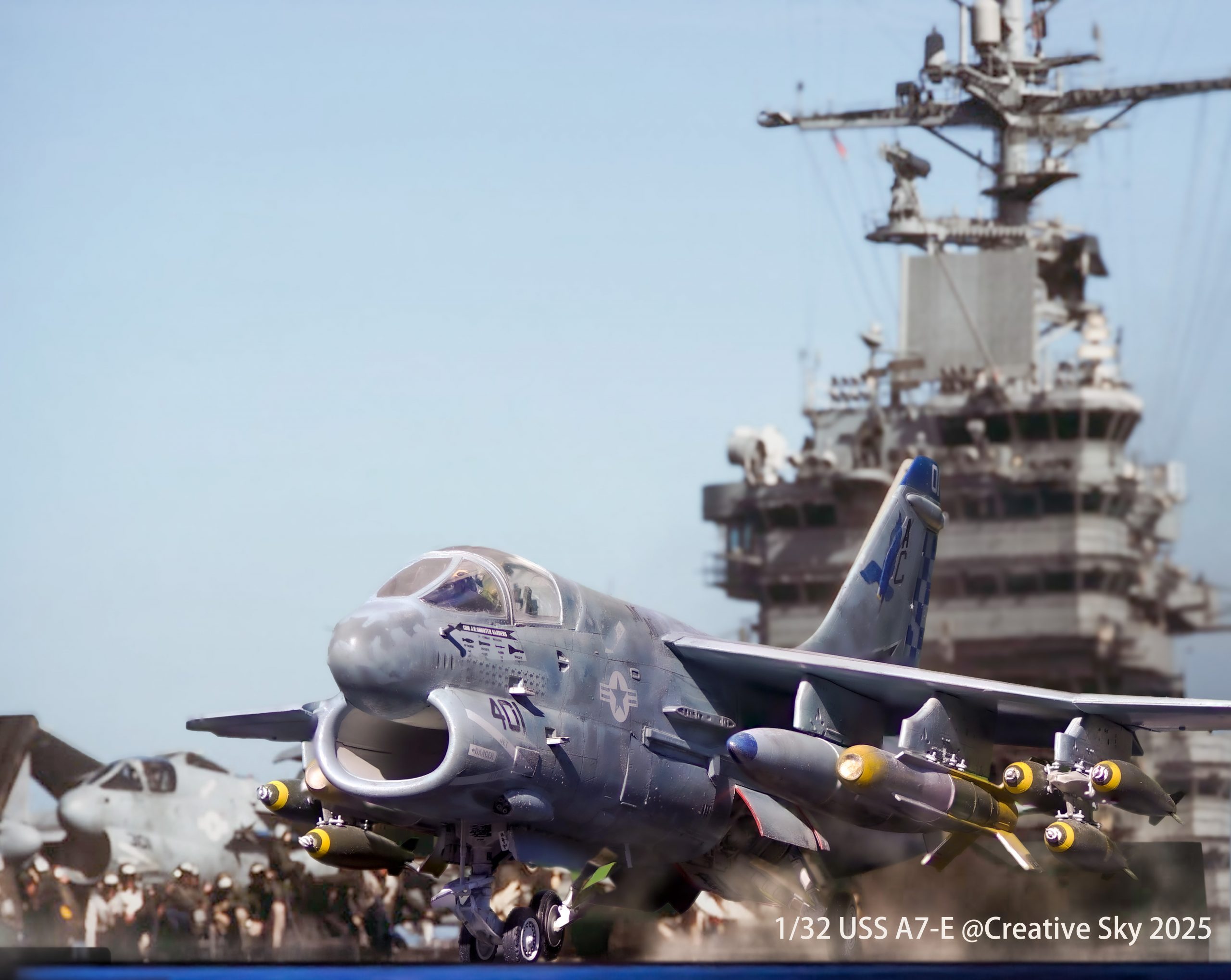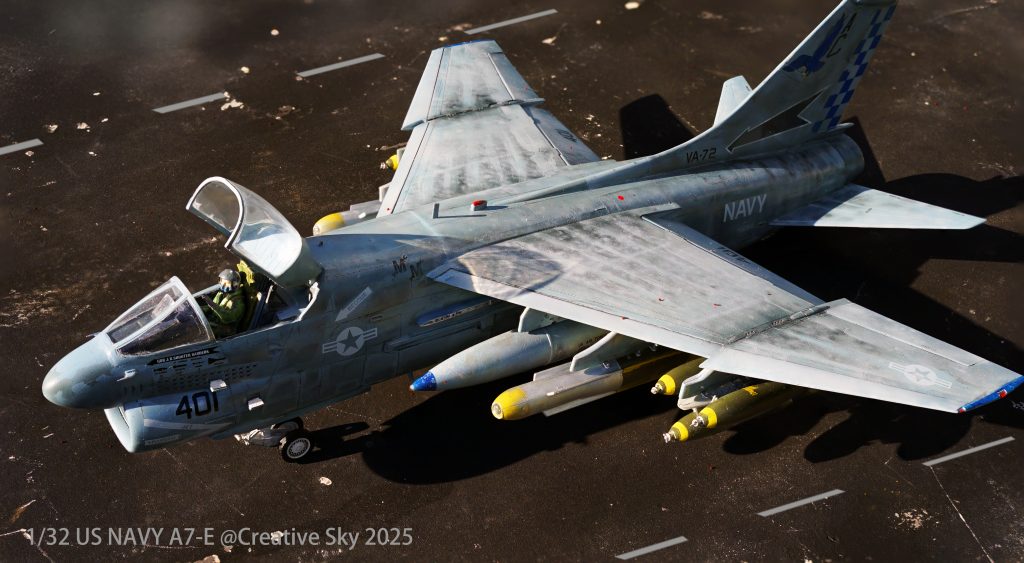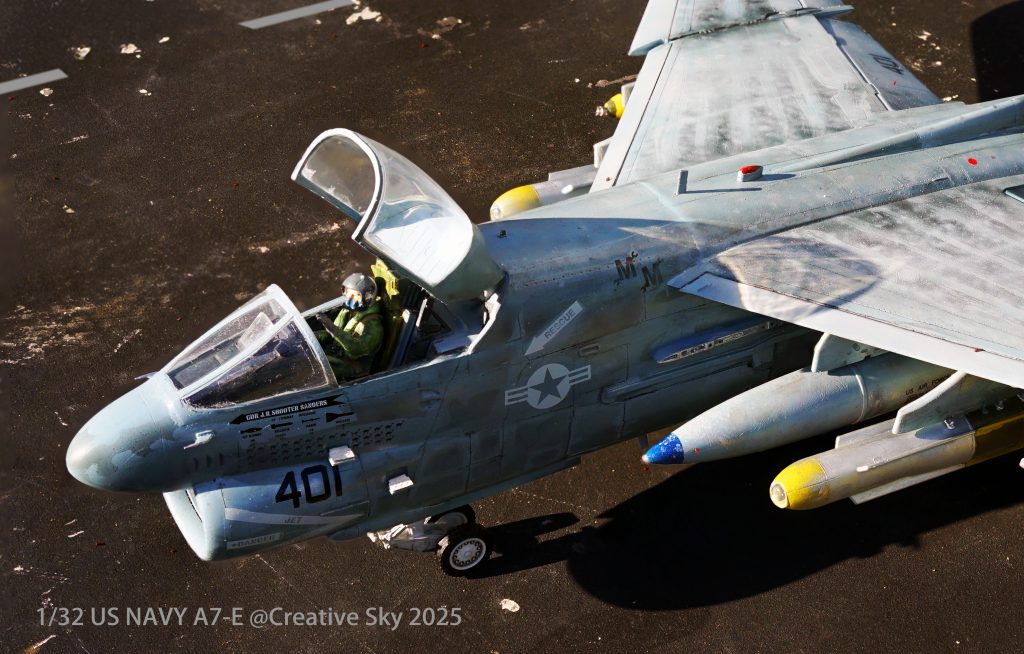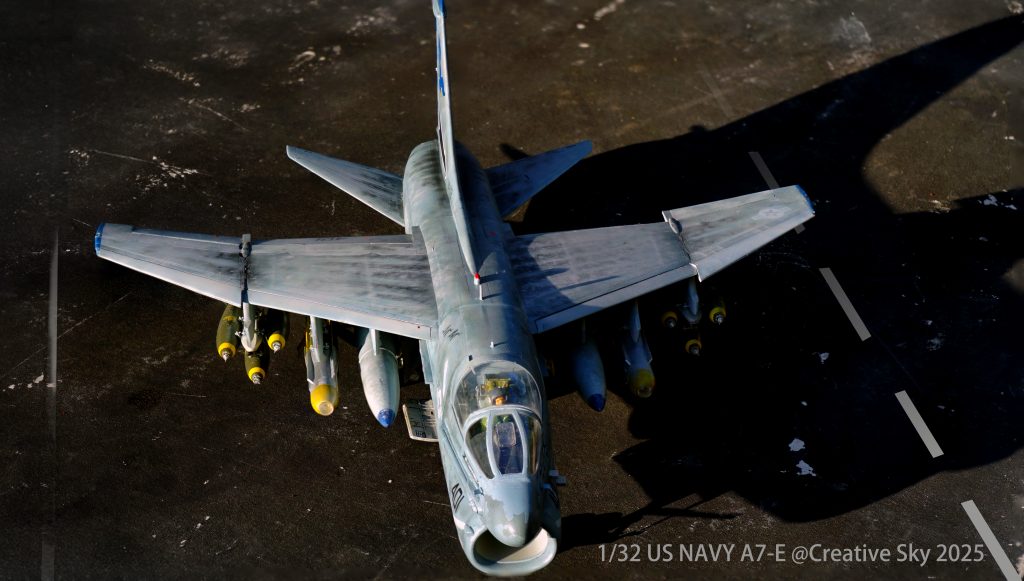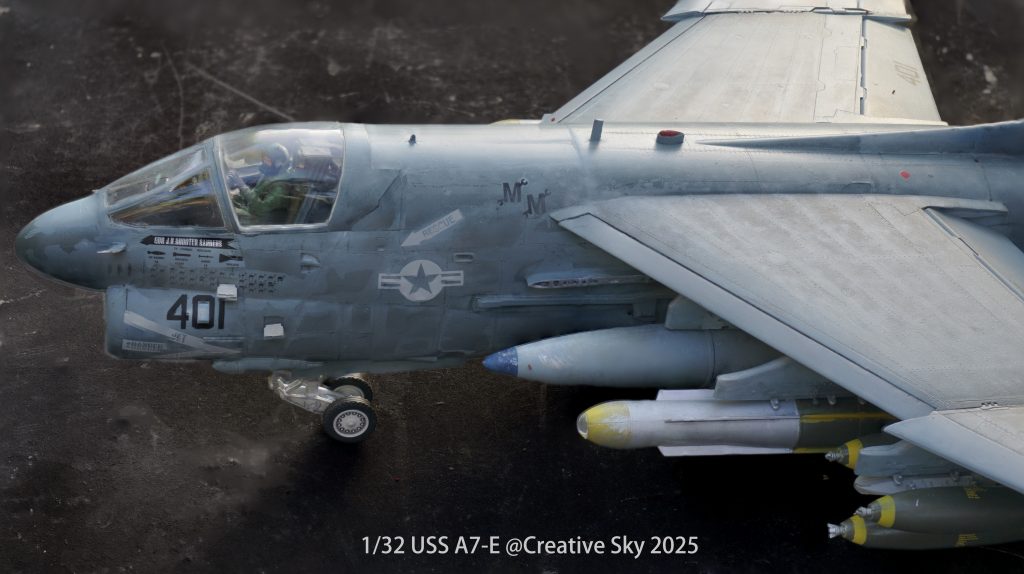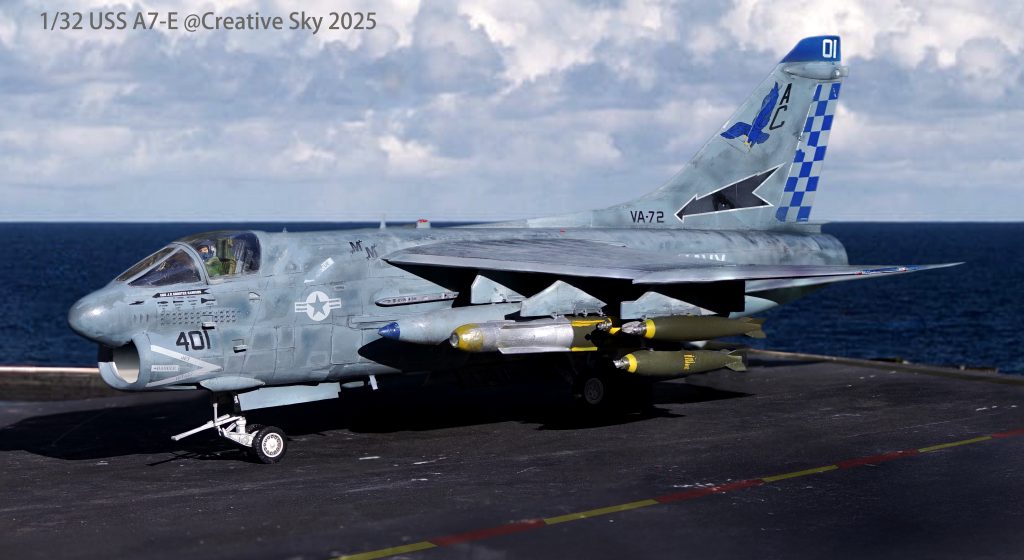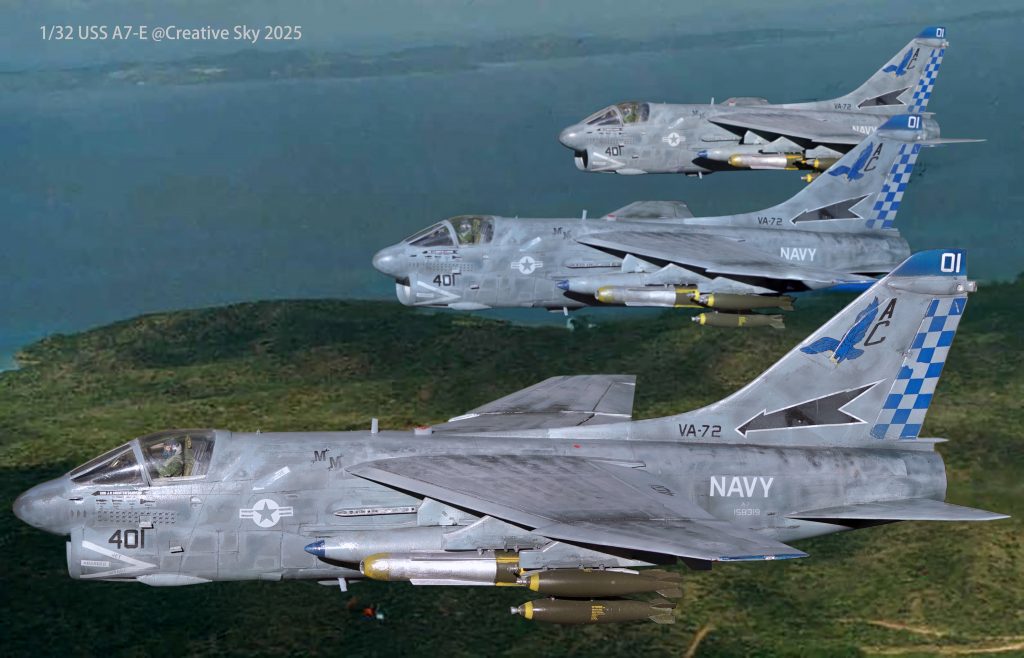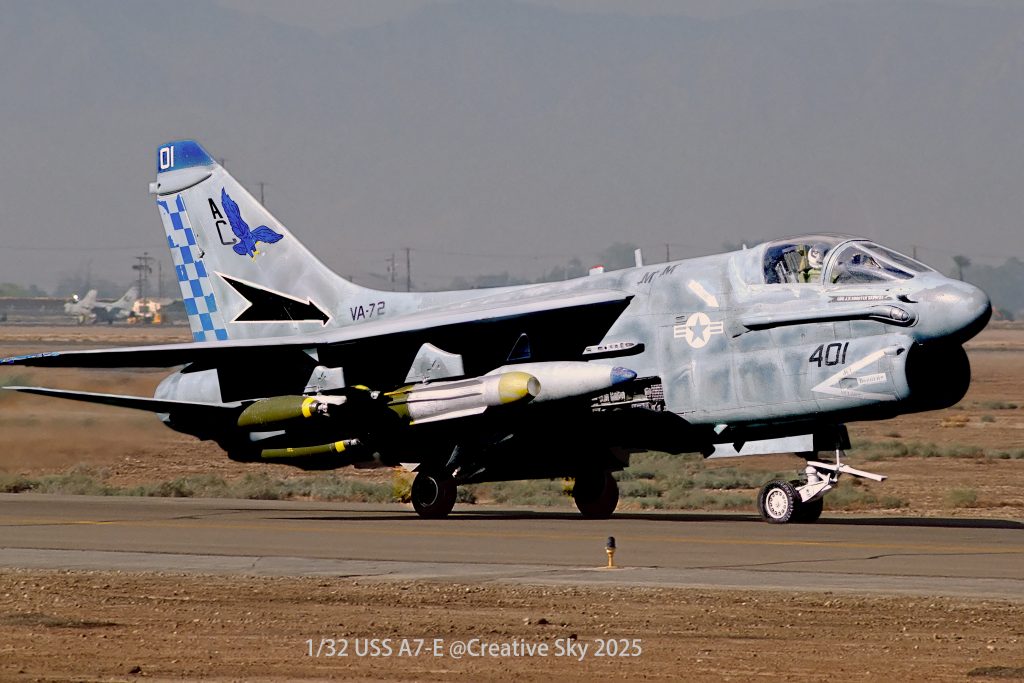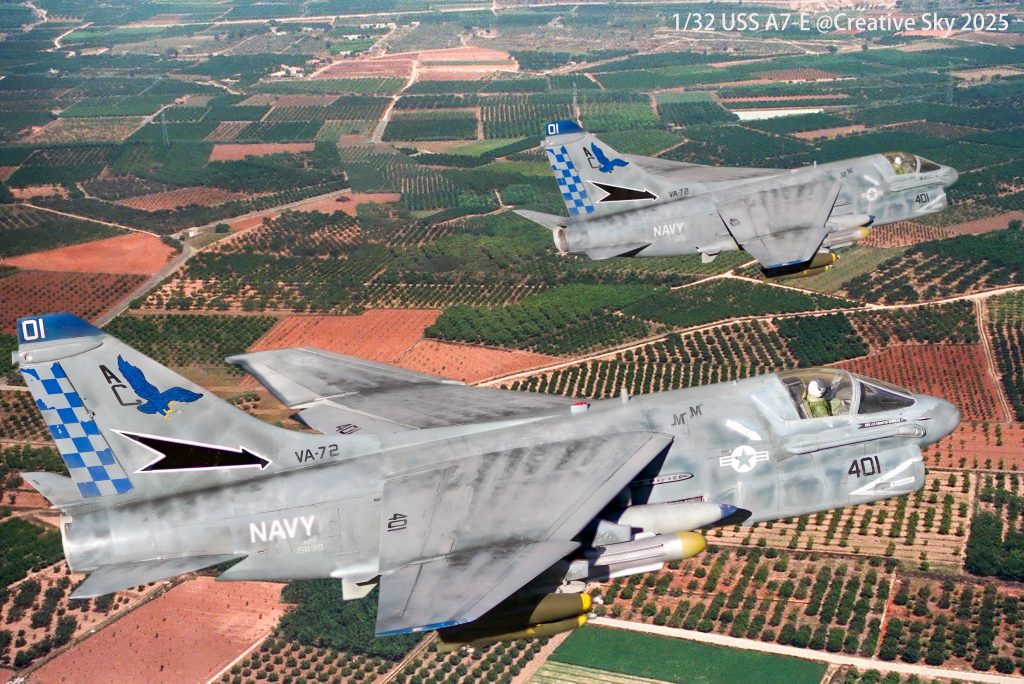Hydraulic / Engine Oil Stains
On aging carrier-based attack aircraft like the A-7, long-term service often leads to hydraulic or engine oil seeping out from seams, access panels, maintenance hatches, and landing gear bays. During flight, these fluids get dragged backward by high-speed airflow, creating streaks or patchy dark stains along the fuselage.
Exhaust and Heat Staining
Areas below the wings or along the fuselage near the engine are frequently discolored or carbon-stained due to high-temperature exhaust and heat exposure from engine operation.
General Weathering and Oxidation
Carrier-based aircraft operating in harsh environments like open sea, desert, or high humidity often develop surface irregularities from moisture, salt buildup, or peeling paint—leading to a naturally mottled and uneven appearance.
While airbrushing the side of the fuselage this time, I was trying to replicate the blocky tonal variations I saw in reference photos. It took me three full attempts to get the effect I wanted, and each round required a lot of effort. Technique-wise, I used masking putty almost like a paintbrush—deliberately shaping its edges to create soft transitions, so the masked and unmasked areas wouldn’t look like harsh, single-tone divisions.
In the first two attempts, I ended up applying the paint too heavily, which made the surface look thick, heavy, and unnatural. Thankfully, I was using Tamiya acrylics, so I was able to wipe it off with alcohol. But that only worked because I had already applied two layers of protective clear coat beforehand. I usually rely on Alclad II Lacquers’ Aqua Gloss Clear for its excellent durability, but I happened to run out this time and had to use Gloss Klear Kote from the same brand instead. Unfortunately, that led to several decal failures on the first round—a small but valuable lesson.
After those tries, I finally got the right feel on the third attempt: gentle airflow from the airbrush, quick passes, and no more than two light coats per area. Beyond that, you just have to stop. This kind of precision is probably second nature for pros, but for someone like me who only builds occasionally, it’s all about learning as you go and picking things up along the way.


